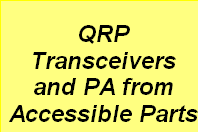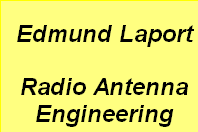

Antentop is FREE e-magazine devoted to Antennas and Amateur Radio an
Special page devoted to
A Simple SSB Transceiver

Custom Search
|
ANTENTOP-
01- 2004, # 005 |
A
Simple SSB Transceiver
|
|
|
|
|
VFO
of the transceiver
|
|
|
|
|
|
For this purpose, construct the
test circuit of figure 1.
This is a simple Hartley-style crystal oscillator. You will require
access to either a frequency counter or a general coverage receiver
(ask a neighborhood ham to allow you to bring over your crystals
to his shack and test them for few minutes). Mark each crystal
with a number and solder it into the circuit (don't use a crystal
socket). Connect the 9 volt battery and measure the frequency.
If you are using a receiver, find out the frequency on which the
crystal is absolutely zero. Note the frequencies with the 33 pf
capacitor in series and shorted. You will have a pair of frequencies
for each crystal. Select four crystals with pairs of frequencies
that match within 50-40 Hz of each other. A fifth (for the carrier)
oscillator crystal should be within 100 hz of the other four selected.
Calculate the value of the capacitors
of Fig.2 like this:
|
2. C1 = 21 * F, C2 = 40 * F. Choose
the nearest available fixed capacitor. If you can't find a fixed
capacitor within 10% of this value, then parallel two capacitors
to achieve the capacitance.
Broad-band
design without Toroids
It was decided
to use broad-band techniques where suitable and keep the circuit
free of too many critically tuned circuits. We decided to investigate
the TV baluns as cores for broadband transformers. The TV baluns
as small ferrites as shown in the picture. Almost all the broadband transformers
are bifilar. Two (the modulator and the transmit mixer cum product
detector) are trifilarly wound. They are simple to produce. Making a bifilar transformer:
►Take
two lengths of 36 swg copper enameled wire. |
|
|
|
|
Page 66 |
|
 |
 |
 |
 |
Just for Fun:

Powered byIP2Location.com
Thanks for your time!
Last Updated:
February 25, 2020 22:15






